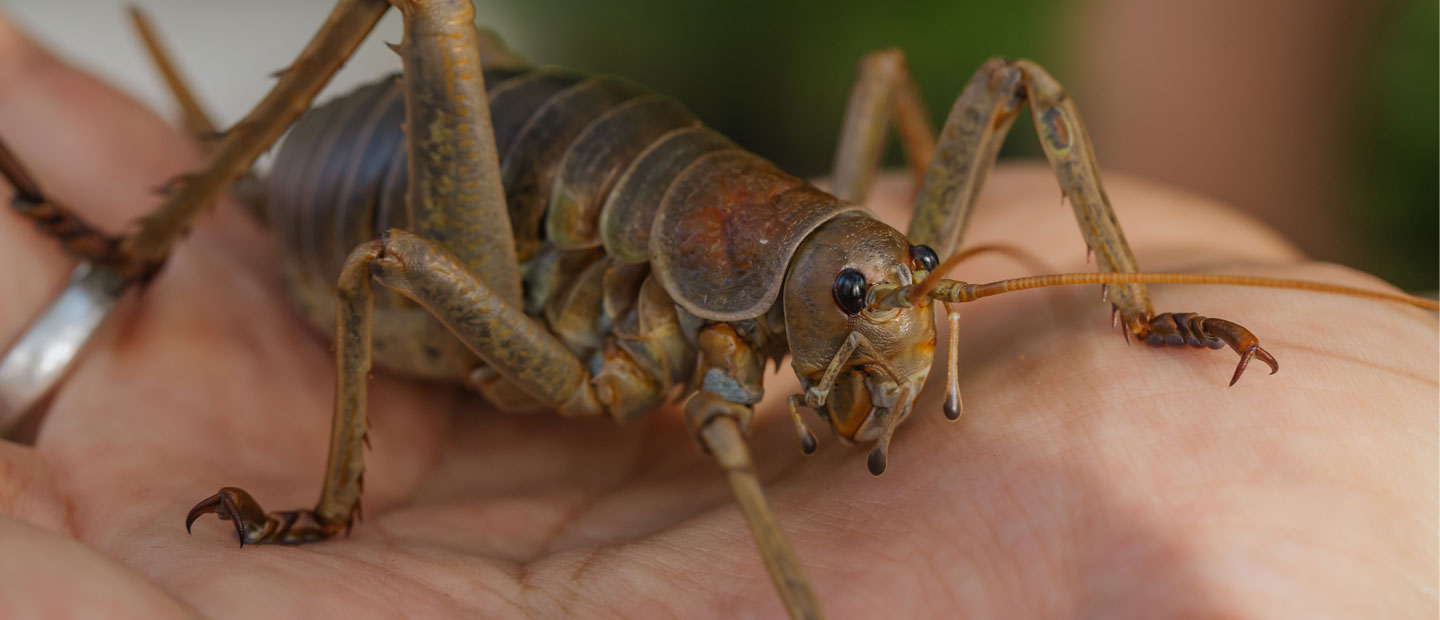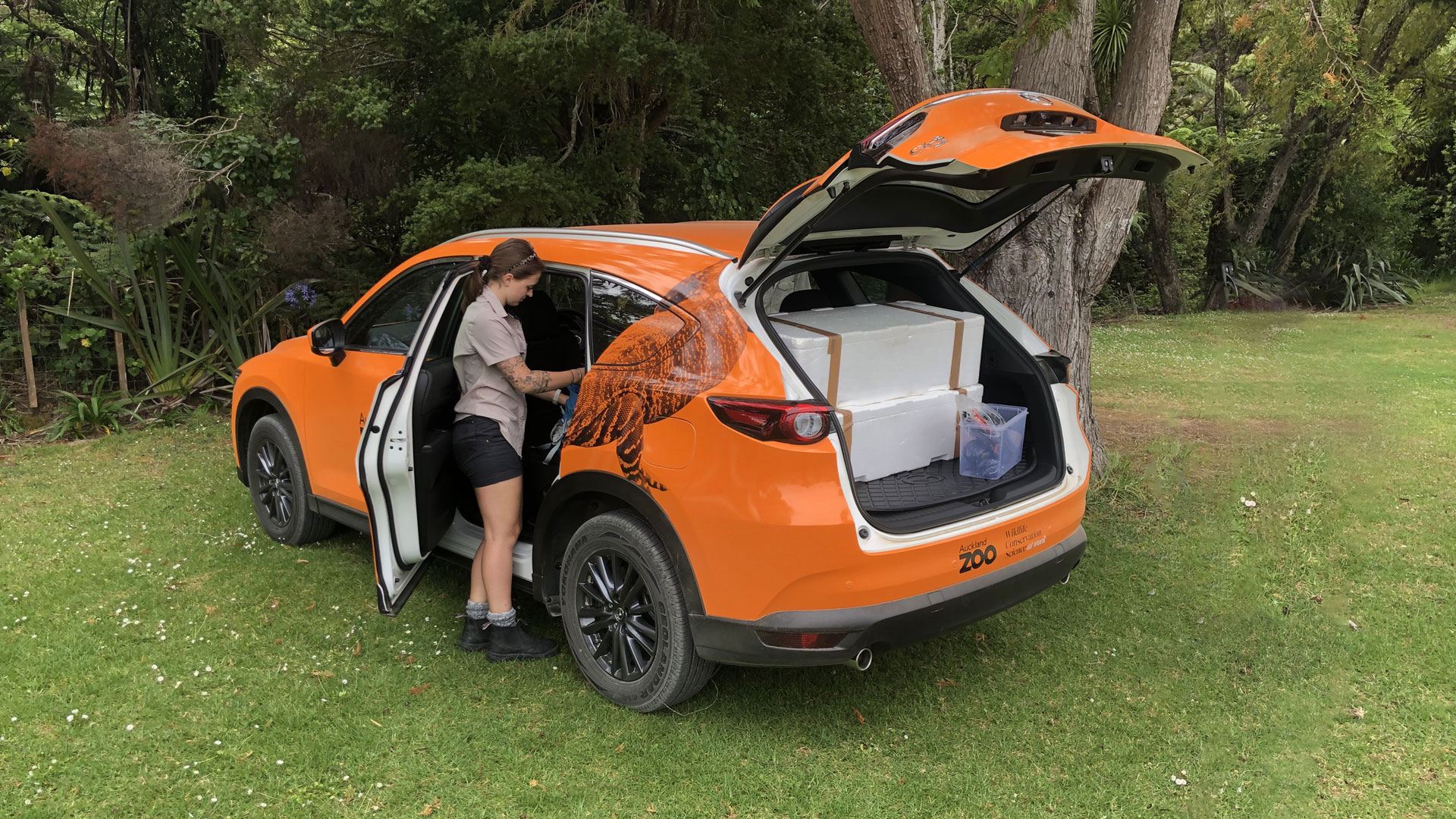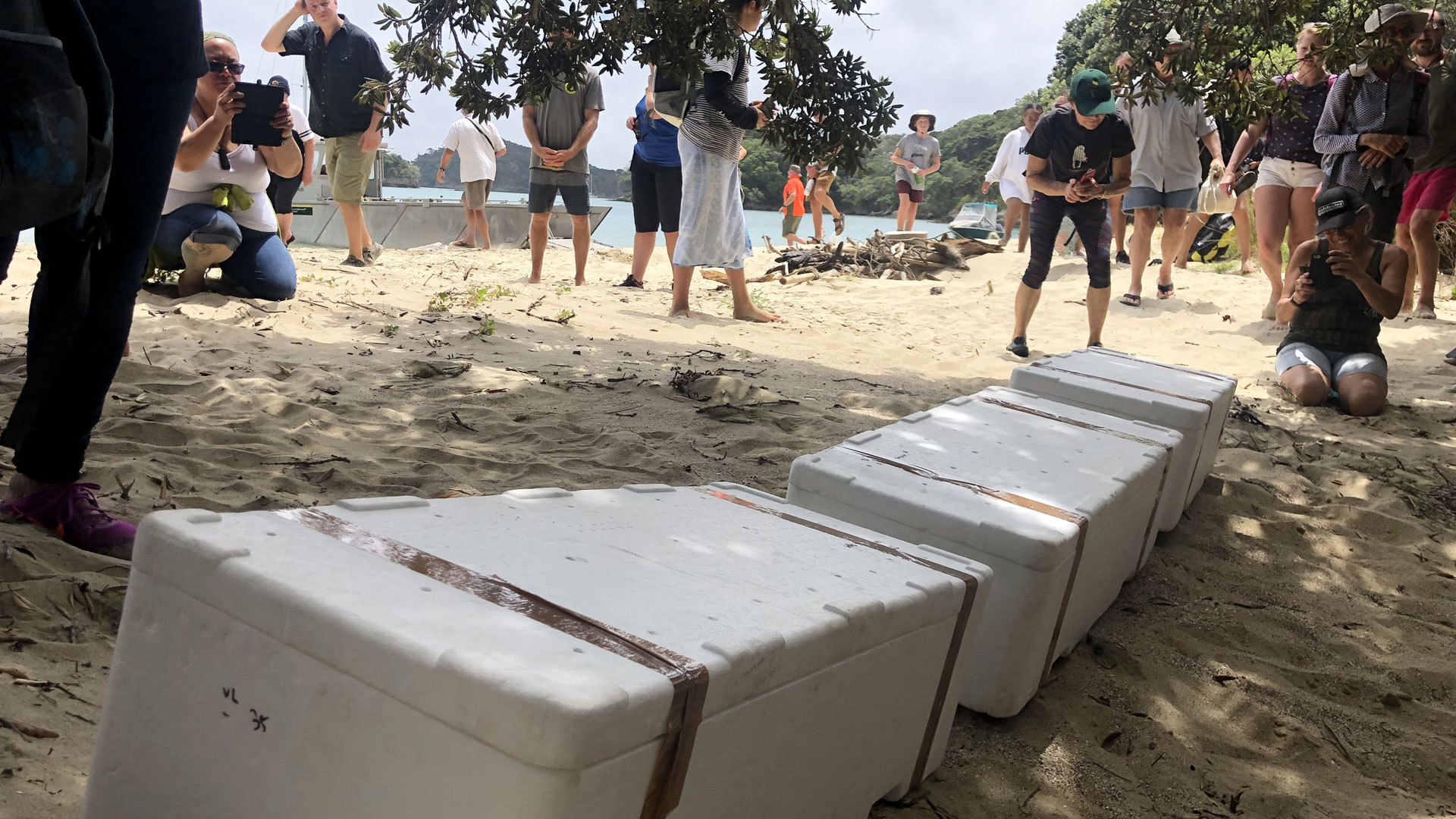While historically wētāpunga were once widespread on mainland Aotearoa, over the years their range was reduced to one Island - Hauturu-o-Toi / Little Barrier. With support from Ngati Manuhiri and Department of Conservation, we've been able to breed and release more than 5,000 of these giant wētā and this Bay of Islands partnership marks the six, seventh and eight Islands that we're restoring these incredible ectotherms to.
“This Northland wētāpunga reintroduction will be the first outside of the Hauraki Gulf and now brings to eight, the number of pest-free islands we’ve been involved in returning these extraordinary creatures to,” says Auckland Zoo Ectotherms team leader, Don McFarlane. “It is so fantastic that Project Island Song is now championing and joining efforts to recover and ensure a future for wētāpunga - a species that plays a really vital role in maintaining our forest ecosystems through the plants it eats and seeds it then distributes - that in turn benefit so many of our other precious native species.”
Wētāpunga play a vital role in maintaining our forest ecosystems through the plants they eat and seeds they distribute, which in turn benefits so many other precious native species. It's through conservation partnerships like this that we're able to ensure their future.








